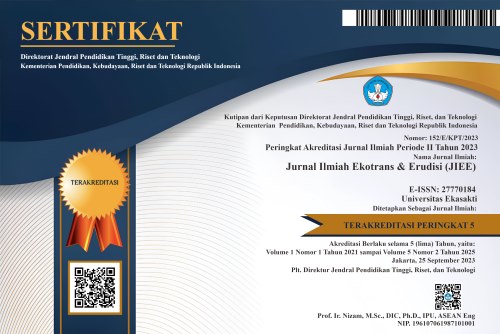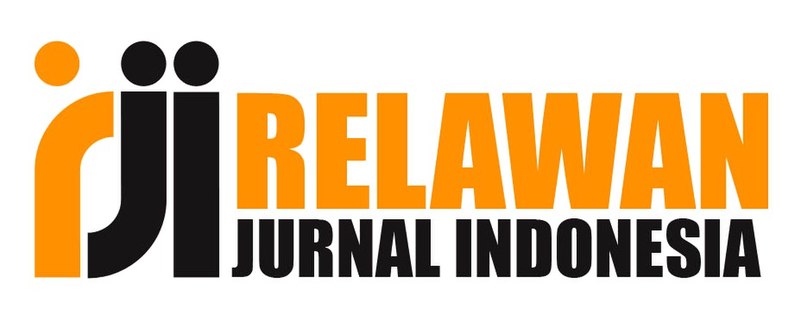Social Transformation in Modern Society: A Literature Review on the Role of Technology in Social Interaction
DOI:
https://doi.org/10.69989/j0m6cg84Keywords:
Social Transformation, Modern Society, Role of Technology, Social Interaction, Literature ReviewAbstract
This article examines the transformative influence of technology on social interaction in contemporary culture. The structure of contemporary society has been considerably altered by technological advancements, particularly in the digital domain. This study used a literature review methodology to investigate the impact of technology on social dynamics, encompassing aspects such as connectivity, communication, and the establishment of social networks. This article concludes that technology has significantly influenced the rise of social connection but has also presented issues such as the depersonalization of interactions and heightened dependence on data. These findings emphasize the necessity for a more extensive comprehension of digital transition and its influence on social life.
Downloads
References
Aaronson, S. A., & Leblond, P. (2018). Another digital divide: The rise of data realms and its implications for the WTO. Journal of International Economic Law, 21(2), 245–272.
Alsop, S., & Pedretti, E. (2013). Science technology society. In Teaching science (pp. 193–205). Routledge.
Antoniou, C. G., & Ioannou, A. (2018). Technology for social change in school contexts: A new landscape for K-12 educational technology research. Education and Information Technologies, 23(6), 2363–2378.
Antonucci, T. C., Ajrouch, K. J., & Manalel, J. A. (2017). Social relations and technology: Continuity, context, and change. Innovation in Aging, 1(3), igx029.
Balters, S., Miller, J. G., Li, R., Hawthorne, G., & Reiss, A. L. (2023). Virtual (Zoom) interactions alter conversational behavior and interbrain coherence. Journal of Neuroscience, 43(14), 2568–2578.
Bender, G. (1999). Shaping Technology as a Means for Transforming Society: The Case of the GSM Standard for Mobile Telecommunication. Science & Technology Studies, 12(2), 64–82.
Bongers, F. J., Geurts, J. L. A., & Smits, R. E. H. M. (2000). Technology and society: GSS-supported participatory policy analysis. International Journal of Technology Management, 19(3–5), 269–287.
Borgmann, A. (2000). Society in the postmodern era. Washington Quarterly, 23(1), 187–200.
Bridgstock, M. (1998). Science, technology and society: an introduction. Cambridge University Press.
Burkhardt, M. E. (1994). Social interaction effects following a technological change: A longitudinal investigation. Academy of Management Journal, 37(4), 869–898.
Büscher, C. (2022). The problem of observing sociotechnical entities in social science and humanities energy transition research. Frontiers in Sociology, 6, 699362.
Cáceres Zapatero, M. D., Brändle Señán, G., & Ruiz San Román, J. A. (2017). Sociabilidad virtual: la interacción social en el ecosistema digital.
Chang, S. W. C. (2013). Coordinate transformation approach to social interactions. Frontiers in Neuroscience, 7, 147.
Chayko, M. (2014). Techno‐social life: The internet, digital technology, and social connectedness. Sociology Compass, 8(7), 976–991.
Cronjé, J. (2018). Towards a Model for Assessment in an Information and Technology-Rich 21st Century Learning Environment. Occasional Paper# 37. National Institute for Learning Outcomes Assessment.
Danaher, J., & Saetra, H. S. (2022). Technology and moral change: the transformation of truth and trust. Ethics and Information Technology, 24(3), 35.
Doarn, C. R., & Merrell, R. C. (2012). Technology--a social change agent for global health. In Telemedicine journal and e-health: the official journal of the American Telemedicine Association (Vol. 18, Issue 1, pp. 1–2).
Dutton, W. H. (2004). Social transformation in an information society: Rethinking access to you and the world (Vol. 13). Citeseer.
Ede, A. (2019). Technology and society: a world history. Cambridge University Press.
Edirisinghe, C., Zhu, K., Ranasinghe, N., Khoo, E. T., Srivatsan, V. E., Wijesena, J. P., Fernando, O. N. N., & Cheok, A. D. (2011). Modeling literary culture through interactive digital media. Virtual Reality, 15, 239–247.
Fischer, J. E., Reeves, S., Brown, B., & Lucero, A. (2018). Beyond “same time, same place”: Introduction to the special issue on collocated interaction. Human–Computer Interaction, 33(5–6), 305–310.
Gritskevich, T. I., Kazakov, E. F., & Konovalov, A. B. (2017). Value of reforming social and economic models of interaction in society development. European Proceedings of Social and Behavioural Sciences.
Gutorovich, O. V, & Gutorovich, V. N. (2019). Consequences of IT Transformations. ДИСКУРС, 5(4), 43.
Hardey, M. (2008). The formation of social rules for digital interactions. Information, Communication & Society, 11(8), 1111–1131.
Harrington, J. L. (2009). Technology and society. Jones & Bartlett Learning.
Hilbert, M. (2020). Digital technology and social change: the digital transformation of society from a historical perspective. Dialogues in Clinical Neuroscience, 22(2), 189–194.
Hoel, V., Feunou, C. M., & Wolf-Ostermann, K. (2021). Technology-driven solutions to prompt conversation, aid communication and support interaction for people with dementia and their caregivers: a systematic literature review. BMC Geriatrics, 21, 1–11.
Housley, W., Webb, H., Williams, M., Procter, R., Edwards, A., Jirotka, M., Burnap, P., Stahl, B. C., Rana, O., & Williams, M. (2018). Interaction and transformation on social media: The case of Twitter campaigns. Social Media+ Society, 4(1), 2056305117750721.
Huang, K.-H., & Deng, Y.-S. (2008). Social interaction design in cultural context: A case study of a traditional social activity. International Journal of Design, 2(2).
Hülür, G., & Macdonald, B. (2020). Rethinking social relationships in old age: Digitalization and the social lives of older adults. American Psychologist, 75(4), 554.
Ismunandar, A. (2020). Dinamika Sosial dan Pengaruhnya Terhadap Transformasi Sosial Masyarakat. Tarbawiyah: Jurnal Ilmiah Pendidikan, 3(2), 205–219.
Jaafar, N. I., Darmawan, B., & Mohamed Ariffin, M. Y. (2014). Face-to-face or not-to-face: A technology preference for communication. Cyberpsychology, Behavior, and Social Networking, 17(11), 702–708.
Johnson, D. G., & Wetmore, J. M. (2021). Technology and society: Building our sociotechnical future. MIT press.
Jones, D. C. (1942). Technology and Society. Nature Publishing Group UK London.
Kapitonov, I. A. (2020). Transformation of social environment in the application of alternative energy sources. Environment, Development and Sustainability, 22, 7683–7700.
Katz, Y. (2019). Social Technology and the New Forces that Dominate Social and Political Systems. International Journal of Advance Research and Innovative Ideas in Education, 5(4), 855–860.
Kile, F. (2013). Artificial intelligence and society: a furtive transformation. AI & Society, 28(1), 107–115.
Kleineberg, K.-K., & Boguná, M. (2014). Evolution of the digital society reveals balance between viral and mass media influence. Physical Review X, 4(3), 31046.
Krakower, S. (2022). 56.4 Accomplishing Change in This Digital World. Journal of the American Academy of Child and Adolescent Psychiatry, 61(10), S76.
Kuhl, P. K., Lim, S.-S., Guerriero, S., & Van Damme, D. (2019). Social components of technology and implications of social interactions on learning.
Lee, A. J., & Cook, P. S. (2020). The myth of the “data‐driven” society: Exploring the interactions of data interfaces, circulations, and abstractions. Sociology Compass, 14(1), e12749.
Leontyeva, V. L., Pokrovskaia, N. N., & Ababkova, M. Y. (2020). Intellectual networking in digital education–improving testing for enhanced transfer of knowledge. International Conference on Professional Culture of the Specialist of the Future, 171–191.
Lucey, J. V, & Noctor, C. (2022). The contemporary dynamics of the social relationship. Oxford Textbook of Social Psychiatry, 57.
Luppicini, R. (2012). Ethical impact of technological advancements and applications in society. IGI Global.
Mailenova, F. G. (2018). Transformation of ethical norms in society in the era of implementation of the latest technologies. Bioethics Journal, 11(1), 8–12.
Manca, F., Sivakumar, A., & Polak, J. W. (2019). The effect of social influence and social interactions on the adoption of a new technology: The use of bike sharing in a student population. Transportation Research Part C: Emerging Technologies, 105, 611–625.
Marganski, A., & Fauth, K. (2013). Socially interactive technology and contemporary dating: A cross-cultural exploration of deviant behaviors among young adults in the modern, evolving technological world. International Criminal Justice Review, 23(4), 357–377.
Martínez, D. (2018). Sobre el incierto futuro del trabajo y del rol de los actores sociales. Economía, 41(81), 69–100.
Mccloy, D. (2014). Technology: Made simple. Elsevier.
McDaniel, B. T., Galovan, A. M., & Drouin, M. (2021). Daily technoference, technology use during couple leisure time, and relationship quality. Media Psychology, 24(5), 637–665.
Mulia, R. A., & Saputra, N. (2020). Analisis Faktor-Faktor Yang Mempengaruhi Kesejahteraan Masyarakat Kota Padang. Jurnal El-Riyasah, 11(1), 67–83. https://doi.org/10.24014/jel.v11i1.10069
Mushquash, A. R., Charlton, J. K., MacIsaac, A., & Ryan, K. (2022). Romance Behind the Screens: Exploring the Role of Technoference on Intimacy. Cyberpsychology, Behavior, and Social Networking, 25(12), 814–820.
Oh, K., Kho, H., Choi, Y., & Lee, S. (2022). Determinants for successful digital transformation. Sustainability, 14(3), 1215.
Olsson, T., Jarusriboonchai, P., Woźniak, P., Paasovaara, S., Väänänen, K., & Lucero, A. (2020). Technologies for enhancing collocated social interaction: review of design solutions and approaches. Computer Supported Cooperative Work (CSCW), 29, 29–83.
Paliy, I. G., Plotnikova, T. V, Shtofer, L. L., & Tumaykin, I. V. (2017). Features of social and economic transformations in the globalization era. European Research Studies Journal, 20(1), 117–128.
Pantano, E., & Verteramo, S. (2017). How technologies are changing the social relationships in the shopping experience? International Journal of Technology Marketing, 12(2), 151–164.
Pavlova, M. (2005). Social change: How should technology education respond? International Journal of Technology and Design Education, 15, 199–215.
Petrova, K., & Schulz, M. S. (2022). Emotional experiences in technology-mediated and in-person interactions: An experience-sampling study. Cognition and Emotion, 36(4), 750–757.
Putra, I., Ardhaneswari, P. P. N., Ariasih, N. W. D., & Kanaya, I. (2022). Transformation Based Digital Technology: The Effectivity of Psychosocial Intervention Method. Smart City, 2(1), 3.
Rahman, M. (2020). Technology: technological advances and changes in human lifestyles in a socio-cultural perspective. Proceeding International Conference on Science and Engineering, 3, 721–730.
Sahlin, J. P. (2015). Social media and the transformation of interaction in society. IGI Global.
Saldaña Sagredo, A. (2012). Literatura y posmodernidad: sobre interactividad y escritura hipertextual. Castilla: Estudios de Literatura, 3.
Sassen, S. (2012). Interactions of the Technical and the Social: Digital formations of the powerful and the powerless. Information, Communication & Society, 15(4), 455–478.
Satata, D. B. M. (2023). ROLE OF DIGITAL TECHNOLOGY IN INTERPERSONAL RELATIONSHIPS IN THE ERA SOCIETY 5.0.
Schwarz, O. (2012). The new hunter-gatherers: Making human interaction productive in the network society. Theory, Culture & Society, 29(6), 78–98.
Sharabi, L. L., & Dorrance Hall, E. (2021). Conceptualizing and measuring communication interdependence: The technology and face-to-face integration scale. Communication Methods and Measures, 15(3), 222–242.
Shestakova, I. G. (2022). The new role of the technological component in the social reality of the digital transition era.
Shire, S. Y., Baker Worthman, L., Shih, W., & Kasari, C. (2020). Comparison of face-to-face and remote support for interventionists learning to deliver JASPER intervention with children who have autism. Journal of Behavioral Education, 29, 317–338.
Sofradžija, H. (2020). Technosociality and the Rise of the Network Society. New Technologies, Development and Application III 6, 432–436.
Starr, P. (2004). Social transformation twenty years on. Journal of Health Politics, Policy and Law, 29(4), 1005–1019.
Trust, T. (2017). The social affordances of technology. In Journal of Digital Learning in Teacher Education (Vol. 33, Issue 1, pp. 2–3). Taylor & Francis.
Uslu, A., & Gökçe, Ș. (2010). Social interaction in urban transformation areas and the characteristics of urban outdoor spaces: a case study from Turkey.
Van Veldhoven, Z., & Vanthienen, J. (2022). Digital transformation as an interaction-driven perspective between business, society, and technology. Electronic Markets, 32(2), 629–644.
Vardi, M. Y. (2011). Technology has social consequences. Commun. ACM, 54(5), 5.
Weiss, D., Rydland, H. T., Øversveen, E., Jensen, M. R., Solhaug, S., & Krokstad, S. (2018). Innovative technologies and social inequalities in health: a scoping review of the literature. PloS One, 13(4), e0195447.
Wijayanto, E. (2021). The Role Of Technology (Social Media) In Increasing The Awareness Of Healthy Life Styles And Strengthening Social Interactions: An Effort To Handle Covid-19 In The Micro Environment. International Review of Humanities Studies, 6(1), 5.
Zhang, A. W., Lin, T.-H., Zhao, X., & Sebo, S. (2023). Ice-breaking technology: Robots and computers can foster meaningful connections between strangers through in-person conversations. Proceedings of the 2023 CHI Conference on Human Factors in Computing Systems, 1–14.
Downloads
Published
Issue
Section
License
Copyright (c) 2024 Dwiyanti Hanandini (Author)

This work is licensed under a Creative Commons Attribution-ShareAlike 4.0 International License.
Copyright Notice
An author who publishes in the journal "Jurnal Ilmiah Ekotrans & Erudisi" agrees to the following terms:
Author retains the copyright and grants the journal the right of first publication of the work simultaneously licensed under the Creative Commons Attribution-ShareAlike 4.0 License that allows others to share the work with an acknowledgement of the work's authorship and initial publication in this journal
Author is able to enter into separate, additional contractual arrangements for the non-exclusive distribution of the journal's published version of the work (e.g., post it to an institutional repository or publish it in a book) with the acknowledgement of its initial publication in this journal.
Author is permitted and encouraged to post his/her work online (e.g., in institutional repositories or on their website) prior to and during the submission process, as it can lead to productive exchanges, as well as earlier and greater citation of the published work (See The Effect of Open Access).
All materials in this site are protected by the law. It is prohibited to quote a part of or all of this website contents for commercial purposes without the permission or consent of the editors.
If anyone finds one article or more in this journal violate or potentially violate one’s copyrights, please report to us through e-mail of Principle Contact.
Legal-formal aspects of accessing any information and manuscript in this journal website refer to the provision of license Creative Commons Attribution-Share Alike (CC BY-SA). Read more about the Creative Commons Attribution-ShareAlike 4.0 Licence here: https://creativecommons.org/licenses/by-sa/4.0/.
All information available in 'Jurnal Ilmiah Ekotrans & Erudisi' is academic in nature. 'Jurnal Ilmiah Ekotrans & Erudisi' is not responsible for loss due to the abuse of information in the website.
Information
Notice about change in the copyright policy of the journal 'Jurnal Ilmiah Ekotrans & Erudisi' : "From Volume 1, Nomor 1 onwards the copyright of the article published in the journal 'Jurnal Ilmiah Ekotrans & Erudisi' will be retained by the author"
Privacy Statement
The names and email addresses entered in this journal site will be used exclusively for the stated purposes of this journal and will not be made available for any other purpose or to any other party.




































